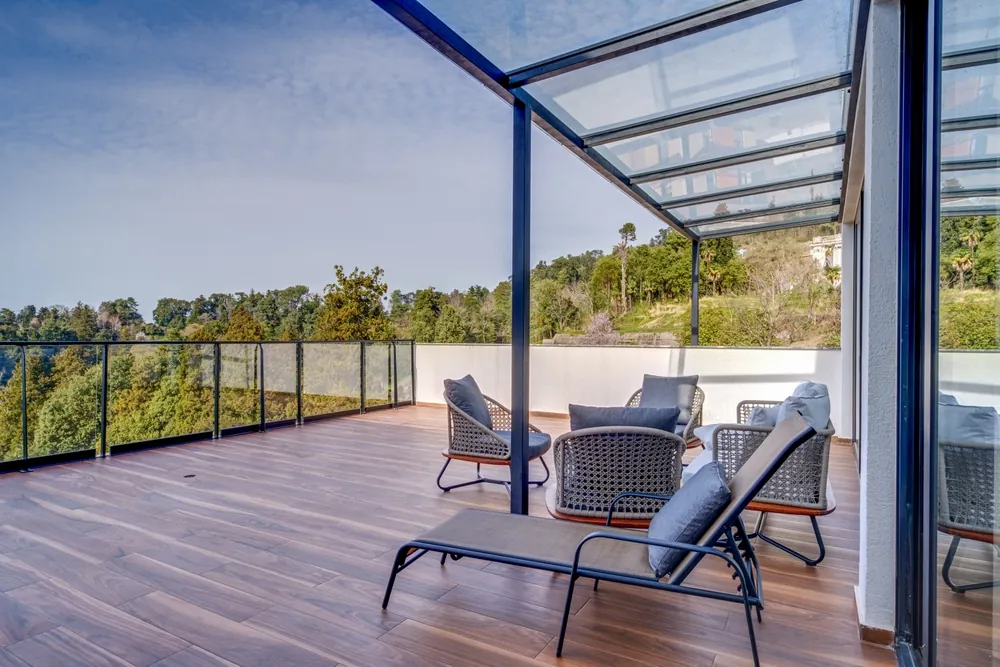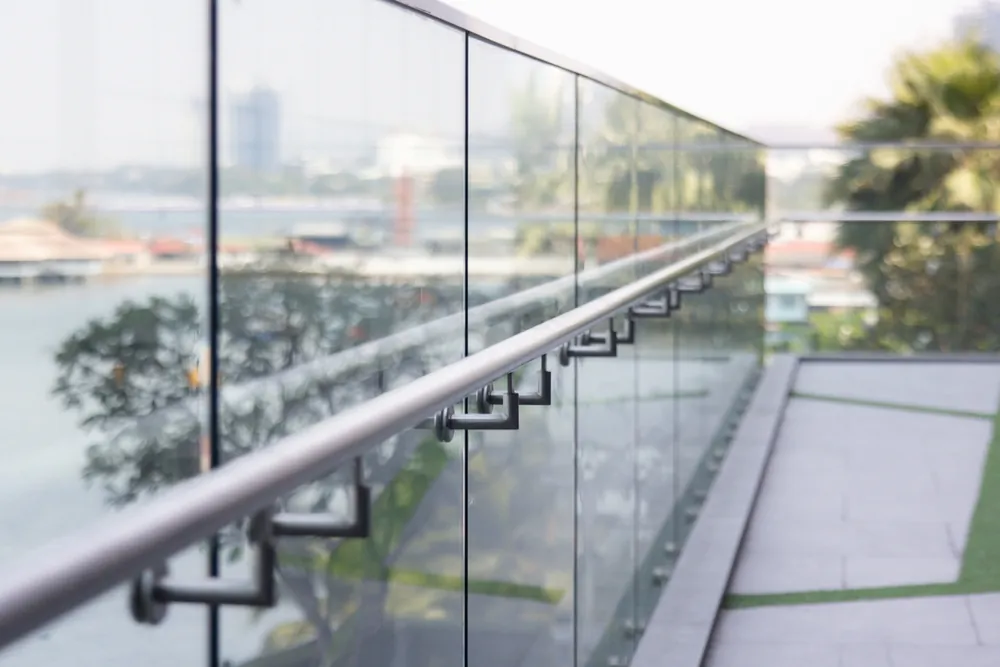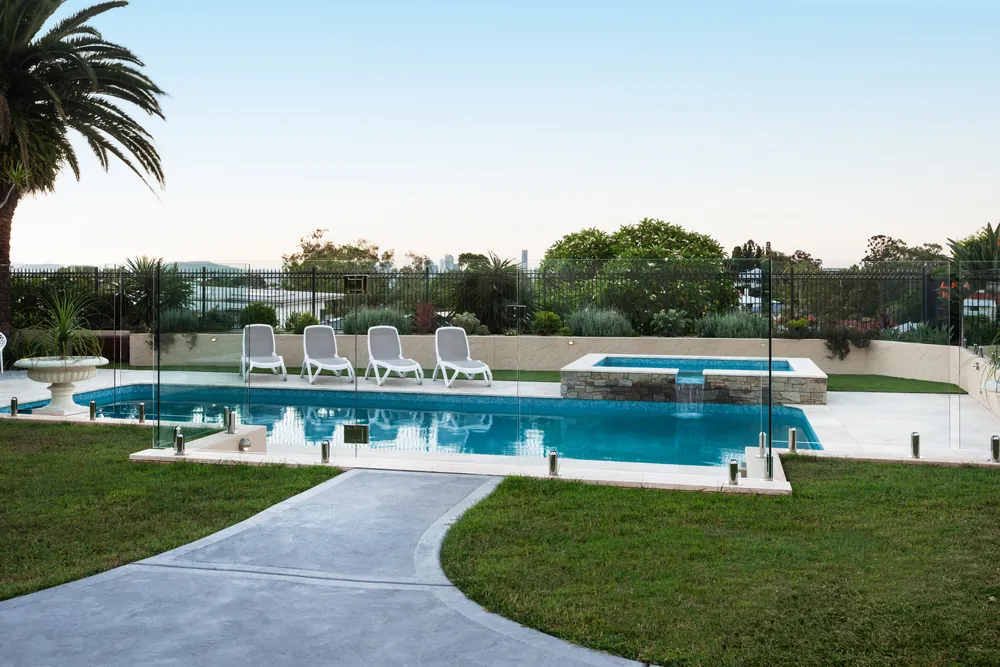Crafting precision glass solutions you can trust for elegance and durability.
Crafting precision glass windows you can trust for elegance and durability.
Modern coastal homes are no longer just about enjoying the sea breeze; they’re about harmonising beauty, light and resilience. Along Australia’s Central Coast, homeowners are embracing glazing to merge contemporary style with coastal resilience. At Clearview Glass Group, we’ve seen how this material transforms homes, framing ocean views, resisting the elements and bringing light, clarity and sophistication into daily living.
Let’s explore how new solutions are shaping the future of coastal architecture and lifestyle.

In recent decades, this material has now defined coastal design, reshaping how homes interact with their surroundings. It unites form and function, allowing light and reflections to become part of the home’s architecture.
Coastal homes are built around a feeling of space, freedom and fluidity. Open-plan layouts remove the old divisions between rooms, creating a flow that mirrors the freedom of the ocean. Through large panels and seamless joinery, glazing enhances this sense of continuity and light. This approach not only maximises usable space but also fosters a sense of tranquillity by blending the natural environment into the heart of the home.
Coastal properties thrive on light and airflow. Expansive glazing welcomes sunshine and encourages breezes to move naturally through the space, reducing the need for artificial cooling. The result is an interior that feels brighter, fresher and more energy-efficient throughout the year. When paired with louvred or sliding panels, transparent surfaces enhance cross-ventilation, allowing sea breezes to cool the home naturally and reduce reliance on mechanical cooling systems.
While transparency is central to coastal architecture, maintaining privacy remains a vital consideration. The challenge lies in striking the right balance, preserving openness and views while ensuring personal comfort and security. To achieve this, homeowners choose frosted, tinted or switchable solutions. These options provide varying degrees of opacity without sacrificing the flow of natural light.
Contemporary coastal design celebrates simplicity where less is more, and every element serves a purpose. Edge-free glazing captures the minimalist ideal, highlighting clean lines and uninterrupted views. Without bulky frames or exposed fittings, the result feels light, seamless and perfectly suited to its seaside setting.

Balustrades define space, maintain safety and enhance design continuity. Beyond their practical role as barriers, they influence the character of decks, balconies and staircases, combining strength with architectural balance. In coastal environments, glass balustrades are valued for their ability to resist corrosion, withstand wind exposure and preserve open views without compromising safety.
Balustrade design is guided by strict compliance requirements. Systems using glass must meet Australian Standards AS1288 (Glass in Buildings, Selection and Installation) and AS/NZS1170.2 (Structural Design, Wind Actions). These standards specify how glass balustrades should perform under impact, wind pressure and other environmental stresses.
Different glass types suit different architectural settings. The right choice depends on the balance between appearance, privacy, and strength requirements.
Toughened (Tempered)
Laminated Safety
Tinted and Frosted
Nano-Coated and Low-Maintenance Glass

A backyard pool is more than a recreational feature; it is a centrepiece of coastal living where families gather, unwind and enjoy the beauty of the outdoors. In such spaces, pool areas demand protection and openness. Glass pool fencing achieves this balance beautifully, keeping families safe while maintaining those signature coastal views. It offers an elegant solution that meets standards without interrupting the visual connection between home, pool and ocean.
Few elements capture the spirit of coastal living like frameless glass pool fencing. It provides an uninterrupted visual connection to the ocean, sky and surrounding landscape, creating the sense of openness and freedom that defines modern seaside architecture. Each system uses precision-engineered glass panels supported by discreet spigots or channel fittings that appear almost invisible once complete. The result is a seamless boundary that enhances outdoor aesthetics while maintaining full compliance with Australian safety standards.
The smallest components often face the harshest conditions. In coastal environments, salt and humidity can quickly affect standard materials. Marine-grade stainless steel fittings ensure every bracket and hinge resists corrosion and maintains strength under constant exposure to moisture and wind. Each element is designed for durability and long-term performance.
Finishing details shape both the look and longevity of glass pool fencing. Quality hardware ensures the system performs well under outdoor conditions while complementing surrounding architecture. Components such as latches, hinges and spigots can be chosen to blend seamlessly with the overall design.
A well-designed pool fence must achieve safety without obstructing views. High-transparency, low-iron glass maintains colour accuracy and natural light, ensuring the pool area remains bright and open. The combination of structural integrity, clear sightlines and durable materials creates a secure yet visually seamless outdoor environment.

Bathrooms have evolved from purely functional spaces into private retreats. A screen can transform a simple bathroom into a calming sanctuary. Minimalist glazing, such as frameless shower screens, introduces brightness and openness while standing up to moisture and daily use.
Privacy doesn’t have to mean closing off light or style. Frosted and patterned finishes allow homeowners to maintain the open, airy feeling of a bathroom while introducing subtle separation and texture. These finishes are ideal for homes where bathrooms are positioned near shared or external spaces, providing a sense of discretion without compromising brightness.
Coastal humidity, salt-laden air and mineral-rich water can quickly wear down bathroom fittings if they’re not properly protected. Over time, corrosion, spotting and residue buildup can dull surfaces and weaken components. That’s why coastal-proofing is an essential consideration in bathroom design, especially for homes near the ocean. For frameless shower screens, this protection ensures clarity and long-term performance even in challenging coastal conditions.
Every bathroom is unique, from compact en suites to expansive master suites with ocean-facing windows. That’s why off-the-shelf shower screens often fall short of achieving a perfect fit or seamless integration. Customisation ensures that every panel, especially frameless shower screens, aligns precisely with your layout, tile work and overall theme.
Designing and building a home by the coast is as rewarding as it is challenging. Constructing near the coast demands foresight; every material and fitting must endure salt, wind and moisture without compromising style. Every fixture, fitting and surface must balance aesthetic appeal with structural resilience. Building for coastal conditions isn’t simply about hardening your home; it’s about making thoughtful choices that enhance comfort and longevity.
Coastal environments are beautiful but unforgiving. The same salty air that gives seaside homes their freshness can also accelerate corrosion, weaken hardware and etch surfaces. Without the right materials and treatments, even premium installations can lose their clarity and structural integrity within just a few years. That’s why proactive stability is essential for every feature exposed to coastal conditions.
Even the strongest materials need regular care to preserve their appearance and performance in coastal conditions. Routine maintenance not only keeps your home looking elegant but also extends the lifespan of your installations. Using mild, non-abrasive cleaning agents ensures coatings remain intact, while regular inspections help identify early signs of wear.
As trends evolve, transparent surfaces continue to define the coastal lifestyle. The future lies in smart, sustainable and adaptive systems that merge luxury with performance.
Contemporary design continues to shape the Central Coast lifestyle, bringing resilience, elegance and transparency to every space. From fencing to interiors, each installation celebrates the coast’s natural light and enduring charm. For homeowners, we here at Clearview Glass Group continue to set the standard in durable, elegant and future-ready architecture, helping homes embrace the coast in all its brilliance.
Ready to elevate your space with stunning glass solutions? Contact Clearview Glass today for expert advice, quality craftsmanship, and unmatched customer service. Let's bring your vision to life – get in touch now for a consultation.
